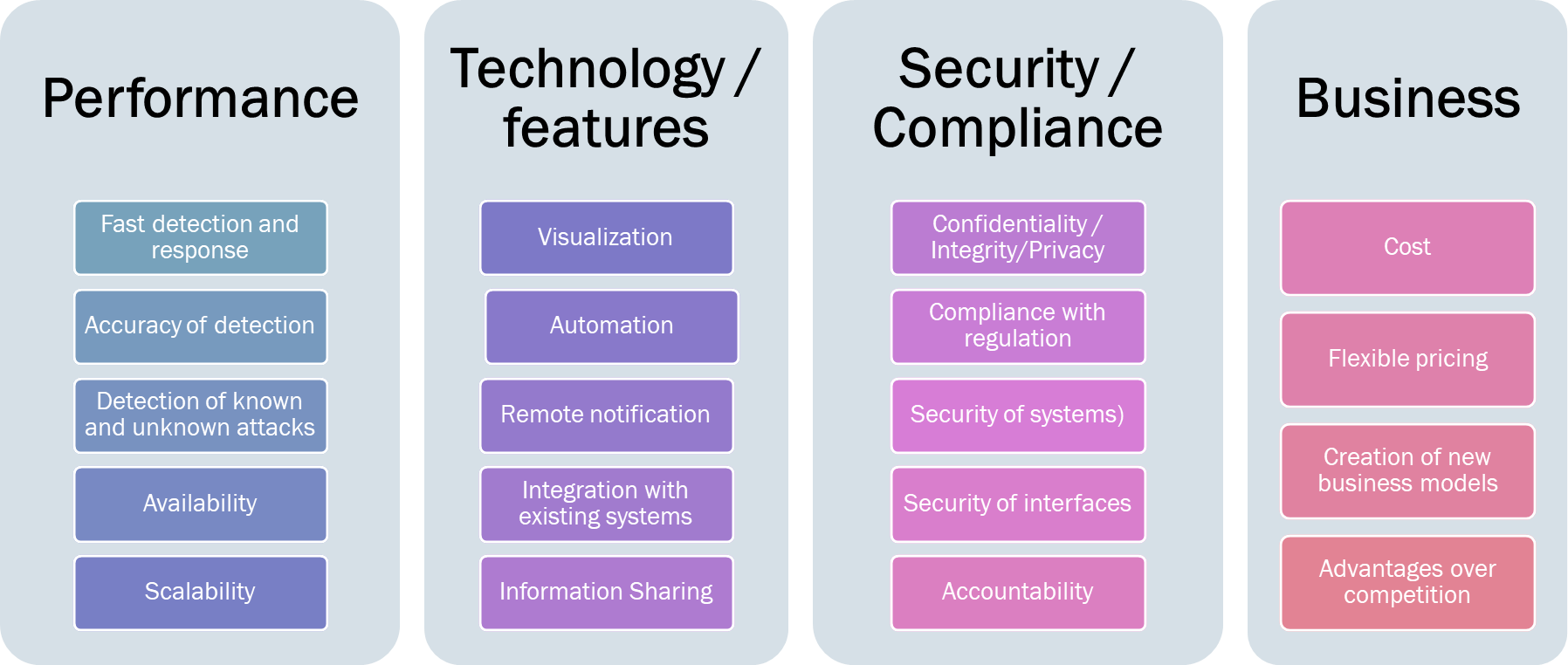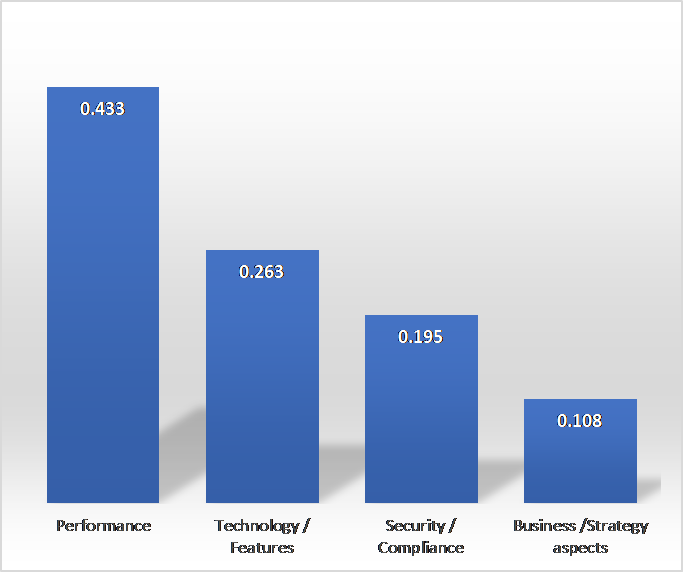Factors affecting the SPEAR market adoption
6/16/2020
To identify the main factors that would affect the adoption of SPEAR, a survey using the Fuzzy Analytic Hierarchy Process (AHP) method has been conducted within the project. AHP is a structured technique capable of dealing with complex decisions, based upon a rational and comprehensive framework for decomposing an unstructured complex problem into a multi-level hierarchy of interrelated criteria, sub-criteria and decision alternatives. The survey revealed experts’ vision regarding the significance of the critical factors anticipated to influence the introduction and acceptance of SPEAR as a technology solution.
The list of the most important factors and subfactors that was compiled is presented in the following figure.

According to the opinions of the experts, the most important criterion for SPEAR is the Performance with a weight equal to 0.43 (43%), followed by Technology at 0.26 (26%). Security follows with a weight equal to 0.20 (20%), while the Business criterion comes last at 0.11 (11%).

Performance is the highest rated and clearly the most important factor that SPEAR must address according to expert opinion. Users are most interested in the set of features that will be critical to the development of the final product.
Technology and Features of the SPEAR solution receives the second highest weight, as experts value the different technologies that must be adopted and implemented within the final product but not as highly as their performance.
Security and Compliance come in the third place, below performance and technology. An interpretation of this result is that the security aspects of the developed tools are self-evident and considered to be implemented de-facto in the SPEAR tool.
The Business criterion has the lowest weight, an outcome that can be attributed to the fact that SPEAR is still in the development process of the different modules and not yet a product with high TRL close to commercialization, thus experts are more concerned about the criteria associated with the development of the final product. At this stage of the project, the business aspects of SPEAR are less mature and not as important as the other criteria.
A different interpretation of the results is that the decision making does not always imply a discrete choice between alternatives, but could also refer to probabilities, possibilities or considerations concerning opportunities vs. risks. The usage of fuzzy numbers could then be employed to guarantee the minimum and maximum values. An α-cut can also be taken into account to define narrower lower and upper limits of the relevant weightings based on risk considerations.
More details about the methodology and the results can be found in Deliverable 8.6: Market Analysis, Roadmap and Business Modelling Report